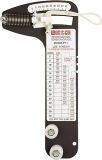Table of Contents
Sailing, with its perfect balance of adventure and tranquility, has enchanted mariners for centuries. Whether you’re cruising coastal waters or vying for victory in a thrilling regatta, your sailboat‘s performance hinges on a seemingly unassuming yet critical aspect: rig tuning. Understanding how to properly adjust the tension in your sailboat’s standing rigging is the key to unlocking the full performance of the boat. In this article, we delve into the art of sailboat rig tuning, exploring the reasons why it is not only important but fundamental to achieving optimal performance, safety, and overall sailing enjoyment.
Why Tuning Your Rig Is Important
Tuning your sailboat rig is essential for several reasons that directly impacts your sailboat’s performance, safety, and overall experience. Here are the main reasons why rig tuning is important:
- Sailing Performance: Properly tuned rigging ensures that the sails are set up optimally for various wind conditions. A well-tuned rig allows the sails to achieve their best shape, providing better lift and speed. It improves the boat’s pointing ability, acceleration, and overall sailing performance.
- Sail Shape and Balance: Rig tuning helps control the shape of the sails, allowing them to perform efficiently. The correct tension in the rigging ensures the right amount of luff tension on the headsail, preventing excessive sag and maintaining proper sail balance. This, in turn, results in better boat balance and easier handling.
- Safety and Durability: An improperly tuned rig can lead to increased stress on the rigging components, mast, and sail. Over-tensioned rigging can cause excessive loads, leading to potential failures or damage. Conversely, under-tensioned rigging can cause the mast to pump or the rig to be unstable in rough conditions. Proper tuning helps prevent rigging issues and increases the overall safety and longevity of the rig.
- Weather Conditions: Different wind conditions require adjustments in rig tension. In light winds, a looser rig allows for a fuller sail shape, while in heavy winds, a tighter rig flattens the sails and depowers the boat. Adjusting the rig to suit the conditions helps maintain control and optimize performance.
- Boat Balance and Helm Feel: Rig tuning affects the boat’s balance and how it responds to the helm. Properly tuned rigging ensures a balanced helm and a boat that tracks well, making it easier to steer and reducing fatigue for the crew.
Regularly checking and adjusting the rig ensures that your sailboat operates at its best, whether you’re cruising or racing. If you’re unsure about rig tuning, consider seeking advice from a professional rigger or an experienced sailor to help you get the most out of your boat.

Sailboat Rig Tuning Process
Tuning a sailboat rig involves adjusting the tension in the standing rigging (shrouds and stays) to achieve the correct balance and shape of the mast and sails. Here’s a step-by-step guide to help you tune your sailboat rig:
1. Check the Basics:
- Ensure the boat is level and upright, preferably in the water, with the mast straight.
- Check that all turnbuckles are free and not corroded or stuck.
2. Determine the Baseline:
- Refer to your sailboat manufacturer’s manual, sailmaker‘s tuning guide, or rigging expert’s recommendations for the initial baseline settings of your rigging tension. This usually includes the recommended tension for the upper and lower shrouds and forestay/backstay.
3. Loosen the Rig:
- Loosen all the rigging turnbuckles to the point where they are free to move. This step allows you to start with a clean slate and avoids putting undue strain on the rigging while adjusting.
4. Center the Mast:
- Use a measuring tape or a specific mast rake measurement tool to ensure the mast is centered and straight on the boat, both athwartships (side-to-side) and fore and aft.
5. Adjust Shroud Tension:
- Begin by tensioning the lower shrouds to the recommended baseline tension. Use a tension gauge, Loos gauge, or tensiometer to achieve the desired tension. Repeat this process for both sides of the boat.
- Next, adjust the tension in the upper shrouds to match the recommended baseline tension. Be careful not to overtighten any of the rigging.




Sailboat Rigging Tension Gauge from Loos & Co., PT-2 Professional Hands-Free Force Gauge Up To 2,000 lb


Sailboat Rigging Tension Gauge from Loos & Co., PT-3 Professional Hands-Free Force Gauge Up To 4,500 lb
6. Check Mast Bend:
- Securely, attach the main halyard to the lowest point on the rear base of the mast. From there, tighten the main halyard until there is a fair amount of tension on it. The main halyard represents a straight line which is the base line for your measurement. If there is mast bend present, there will be a gap between the main halyard and middle of the mast at its furthest bend point. This gap is what is to be measured for your mast bend measurement.
7. Check Mast Rake:
- Mast rake refers to the fore and aft angle of the mast. It can impact boat balance and helm feel. Use a mast rake measurement tool or reference marks on the boat to adjust the mast rake as needed, following the manufacturer’s recommendations or your sailmaker’s advice.
8. Check Forestay Tension:
- Adjust the forestay tension to achieve the desired amount of luff tension on the headsail. For sailboats with adjustable backstays, make sure your backstay off off when taking this measurement. For boats with a fixed backstay, a proper forestay tension ensures proper sail shape and minimizes sag in the forestay.
9. Tune the Backstay:
- If your boat has an adjustable backstay, adjust it to control the bend in the mast and headsail shape. More tension on the backstay usually flattens the mainsail and depowers the rig, while less tension allows for a fuller sail shape.
10. Fine-Tuning:
- Go sailing and make small adjustments to the rig while underway to achieve the best sail shape and performance. Pay attention to how the boat behaves in different wind conditions and adjust the rig accordingly.
11. Periodic Checks
- Rig tuning is not a one-time task. Check your rig regularly for any changes due to sailing conditions, mast compression, or wear. Make adjustments as needed to maintain optimal performance.
It’s essential to keep a record of your rigging settings and changes so you can refer back to them and fine-tune your rigging over time. If you’re unsure about tuning your rig, consider seeking advice from a professional rigger or experienced sailor.




